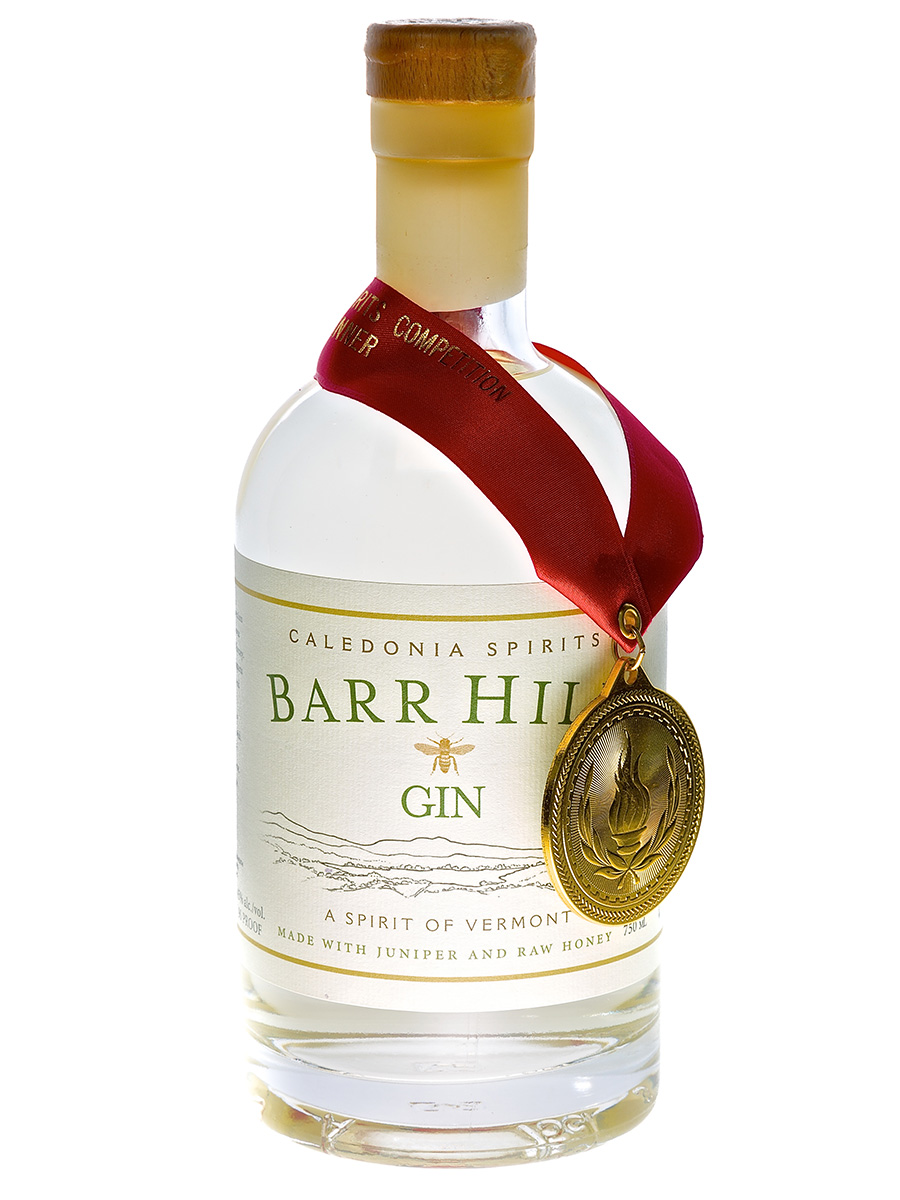The Secret to One of the Country’s Best Gins? Bees.

Photo via Caledonia Spirits
In the wide, dizzying terrain of craft gin, small-batch producers tend to put in inordinate amount of pride in the breadth and diversity of their product’s botanical anatomy. We’ve come a long way from streamlined London Drys like Tanqueray that focused on juniper and maybe one or two other defining herbs and spices. Now there are labels like Anchor Distilling’s Junipero with over a dozen “exotic botanicals” and Alexander Stein’s Monkey 47, an extreme case that utilizes 47 different plant ingredients, including lingonberries from Germany’s Black Forest region. Both Junipero and Monkey 47 are excellent gins, but what if you could achieve that level of complexity (if not more so) without foraging for Bulgarian rose petals, rowan berries, lotus leaves, and bog myrtle?
Barr Hill gin from Caledonia Spirits out of Hardwick, Vermont, achieves just that. Using nothing but a neutral corn-based spirit, juniper, and raw honey, the distillers at Caledonia have produced one of the most elegant and versatile gins on the market.
There are several techniques you can point to in the distillation process—including the usage of a custom-designed botanical extraction still—that help with its alluring bouquet. But the real key, particularly to the gin’s roundness and depth, is the addition of raw honey, which not only adds a subtle wheat-colored hue, but a myriad of flavors.
“When you start off with raw honey, even after you distill it twice, you’re going to end up with something good,” says Caledonia founder Todd Hardie. “In the case of the gin, the raw organic honey is added after distillation, it’s not heated. We take a very respectful view of honey and process everything as little as possible. That way you maintain the boutique, the taste, and the terroir. The honey changes color, so the gin changes color. The fall honey is darker than the summer honey. People are constantly asking us if our recipe has changed and I say, ‘Never!’ What does change is the honey.”
Hardie is something of a honey expert, having come to the spirits profession after 50 years as the apiary and bee inspector for the Vermont Department of Agriculture, as well as a professional beekeeper with over 1,900 colonies in the Champlain Valley. Over the years, he’s translated that knowledge into commercial enterprises selling traditional raw honey-based plant medicine, mead, and starting five years ago, vodka and gin at his farm in Hardwick. That long history in the industry led to connections at the finest apiaries in the country, particularly around the Saint Lawrence River Valley of New York, where Hardie now sources some of the best raw honey, a nectar derived from hundreds of flowers and fruit tree blossoms.
“Raw honey is a medicine, a food, and a sweetener, and it makes everything taste wonderful,” Hardie says. “So, adding raw honey to the gin at the very end makes it softer and rounds off the edges. It’s made from corn, and legally to be a gin it has to have juniper in it, but there’s really nothing else to it. People do taste other things, but those are carried through and expressed by the raw honey. The gin is basic, but there are over 100 different flowers present in the honey.”
That’s the thing that also distinguishes Barr Hill’s gin. Unlike its competitors, some with recipes several centuries old, Hardie’s gin can taste slightly different depending on the season. In spring you might get heavier notes of apple or maple syrup, while in the summer you’re bound to get the hint of something greener and pinier because of the bees’ diet of alfalfa and milkweed.
“Officially Caledonia was launched five years ago, but it’s really a genetic thread,” says Hardie in his thoughtful, soft-spoken voice—an intonation strikingly similar to Beavis and Butt-Head’s hippie high school teacher, David Van Driessen. “In 1817, my great-great-grandfather came from Edinburgh to this country and farmed. He left behind a brother in Scotland whose two boys started making whiskey. So, I don’t think my five years [as a distiller] paints a complete picture. It’s in our genes, and it’s very much supported in Vermont where farming and business are tough. You have to do something special with the highest quality and integrity. What’s going on in Vermont right now is really wonderful, but I really see it going back over 300 years.”
In addition to the Barr Hill gin, Caledonia makes a honey-based vodka, an Old Tom gin aged for six months in charred American White Oak barrels, and coming this spring, two-year-old corn and rye whiskies utilizing local, organic corn and rye from Vermont. You can find Barr Hill gin at all Blanchards Liquors locations as well as restaurants such as Coppa, Sweet Cheeks Q, and Lineage. Check out the Caledonia website for a complete list of places to purchase their products.


